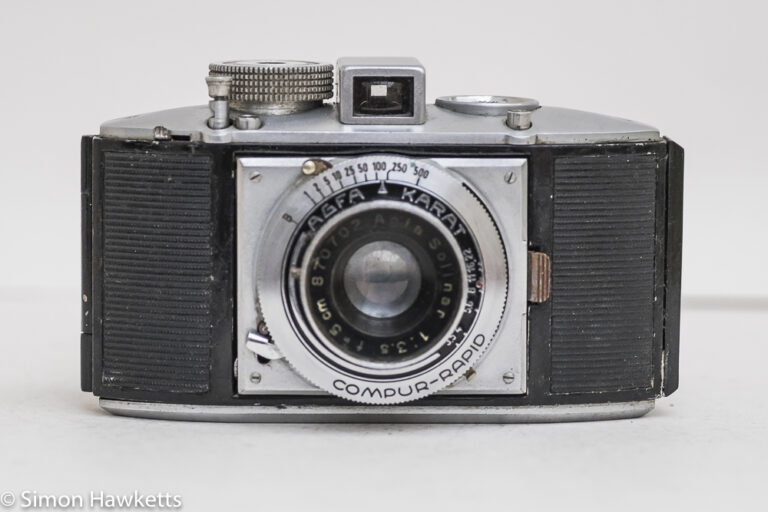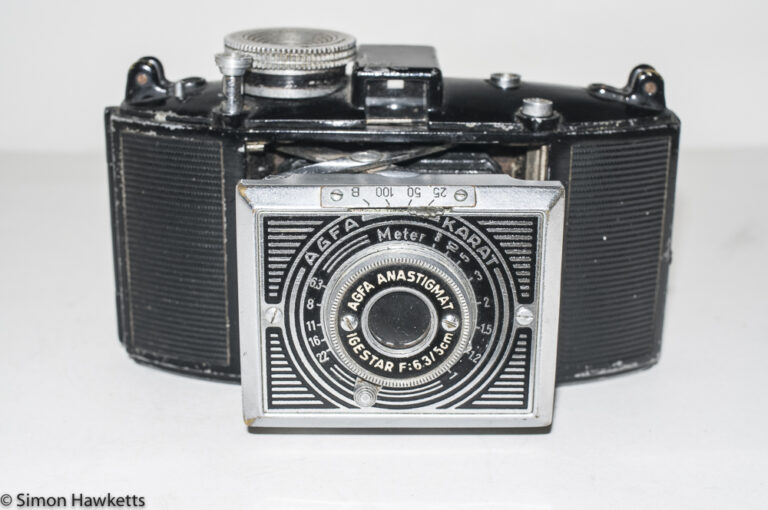A trio of Agfa Rapid cameras
This is a small collection of Agfa Rapid cameras which I purchased a couple of weeks ago. The Rapid film system was designed by Agfa to ease the problems of loading 35 mm film into cameras, but it was killed off by the introduction of the 126 Instamatic film cartridge by Kodak a few years later.
My Agfa Rapid Cameras
I actually bought these cameras not because I wanted them, but because I wanted the Rapid film cartridges inside them.
I was looking on eBay to buy a couple of Rapid cartridges for my Agfa Karat, but I could only find one set, and it was priced at £13 plus £5 postage. That is a ridiculous sum of money for a couple of small metal tins, so I started to look at buying rapid cameras with the film cartridge still in place. That is also quite difficult because the cameras have either lost their empty cartridge, or there wasn’t a photo showing the camera open, so I didn’t know for certain that it was fitted. Also, some people seem to have an odd idea of the value of these low spec, viewfinder cameras.
In the end I found this small collection on sale for £10 postage paid and that seemed to be the best I could do. One camera had no cartridge, but the other two had three between them, so I have a total of 3.
In fact, the Rapid film system is slightly different from the Karat system, but the film will fit in my Karat, so I was reasonably happy.
The actual models in this small collection are an Agfa ISO Rapid I, an Agfa ISO Rapid C and an Ilford Sportina Rapid.
They are all similar, very simple cameras with very few settings, and are aimed at the casual snapshot market. They are all in reasonable condition for their age and build quality, although in all cases the shutter won’t fire. I believe that may be a result of having no film loaded, because it seems unlikely that all three would fail in exactly the same way.
Pictures of the Agfa Rapid cameras
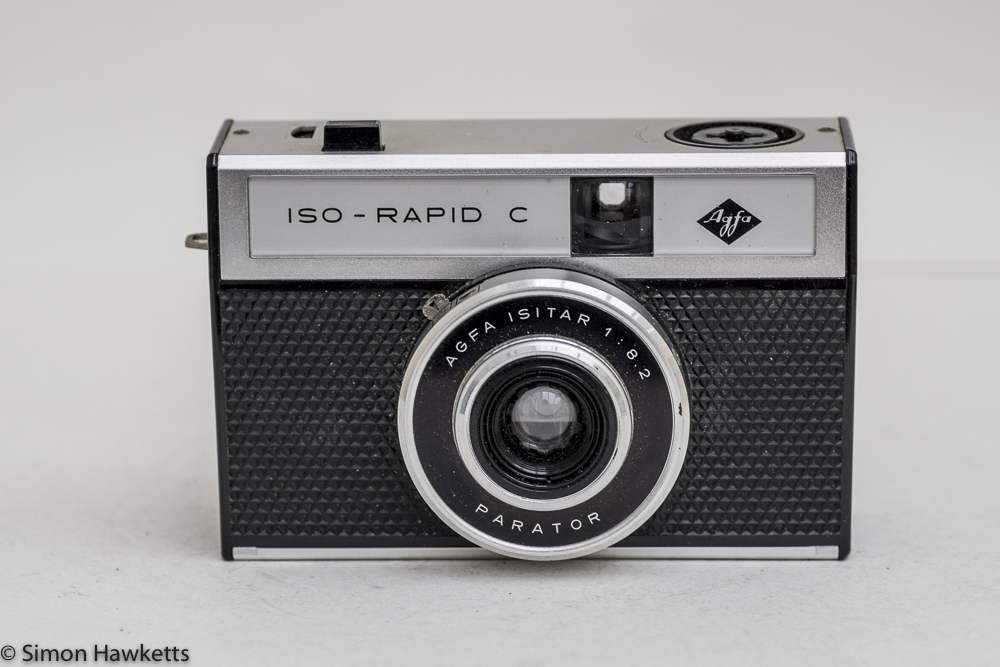
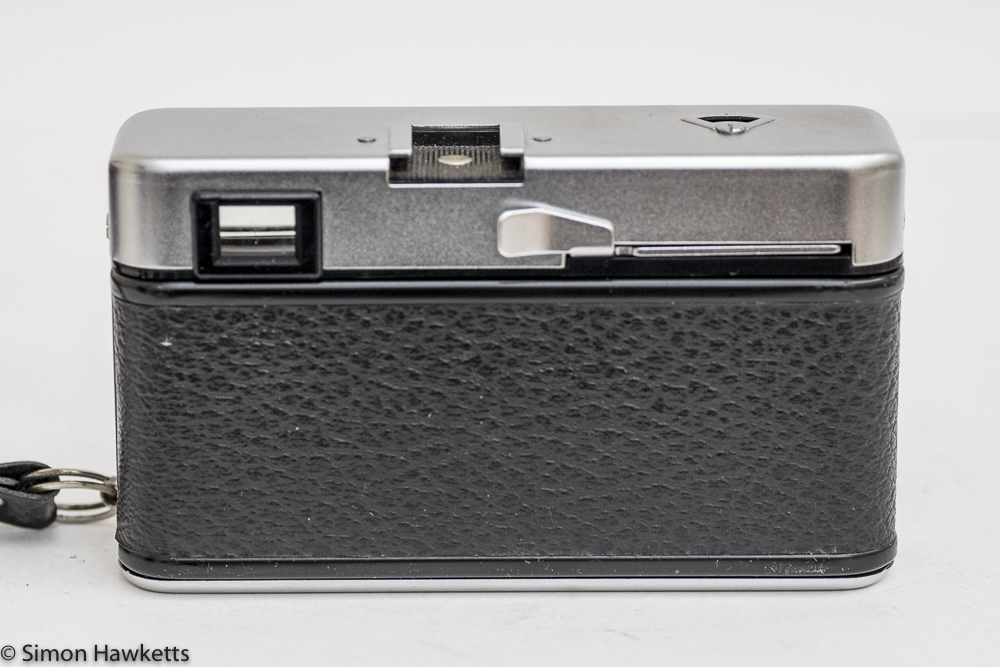
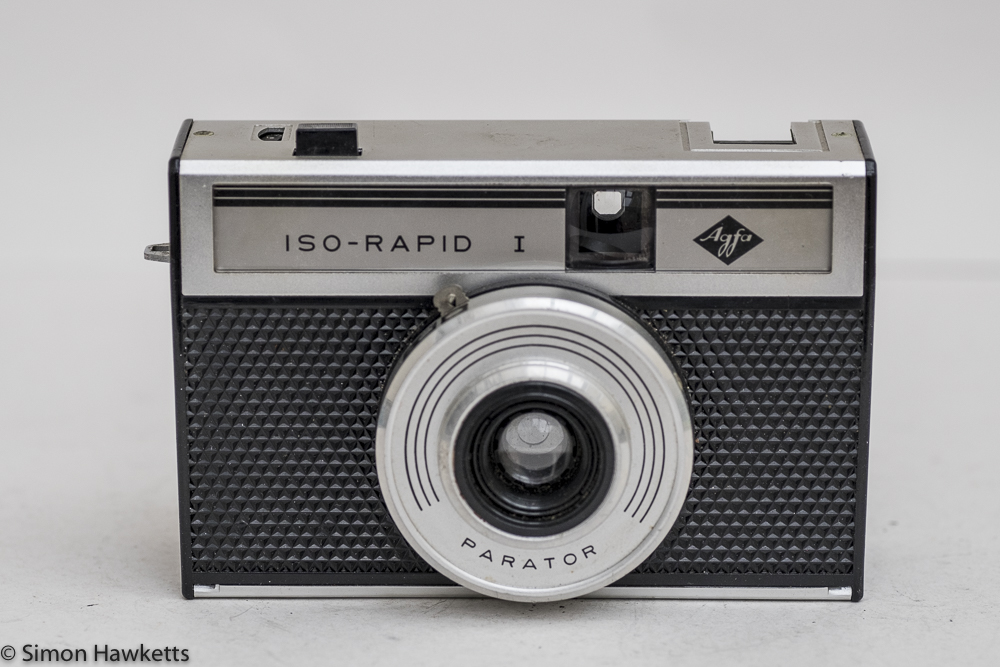
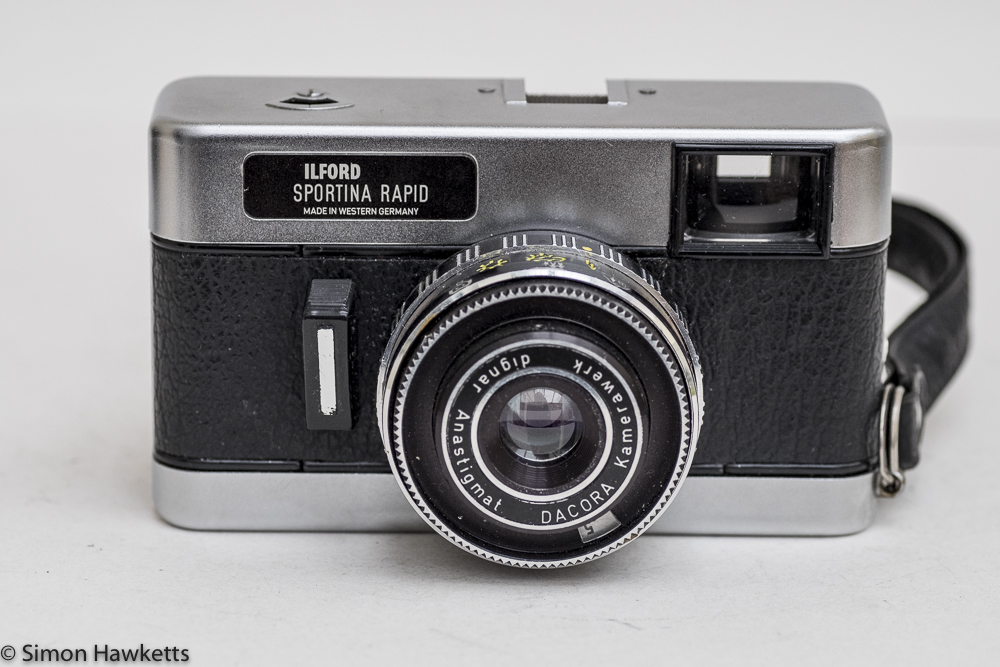
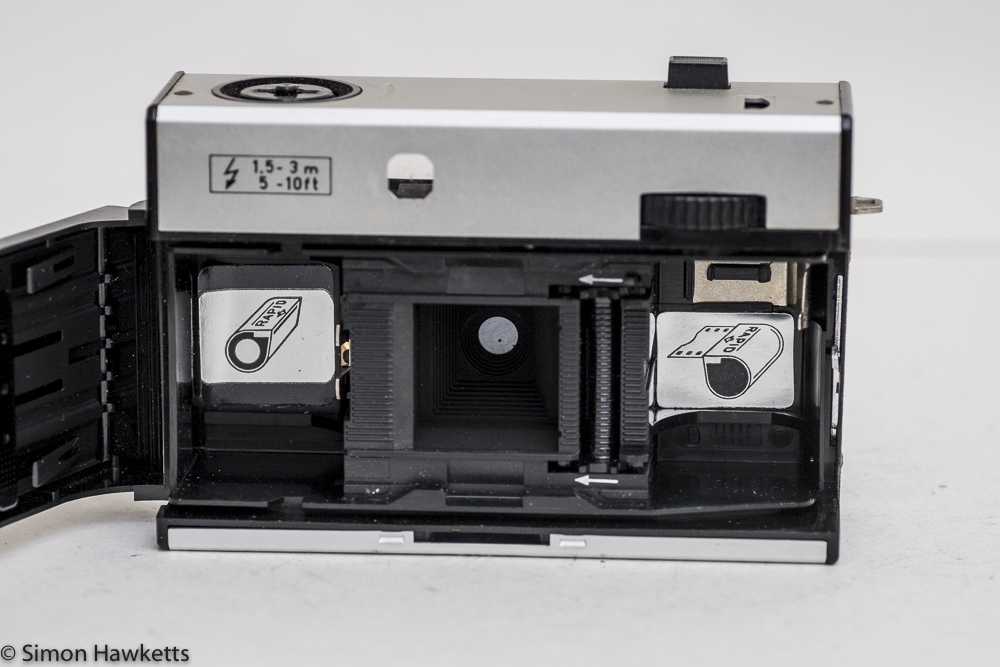
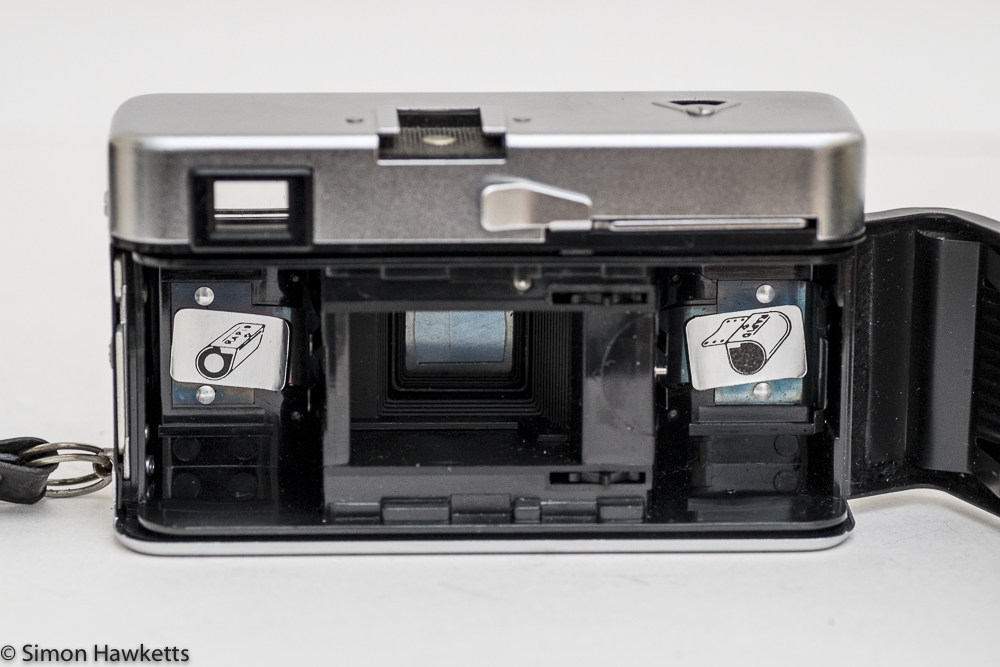
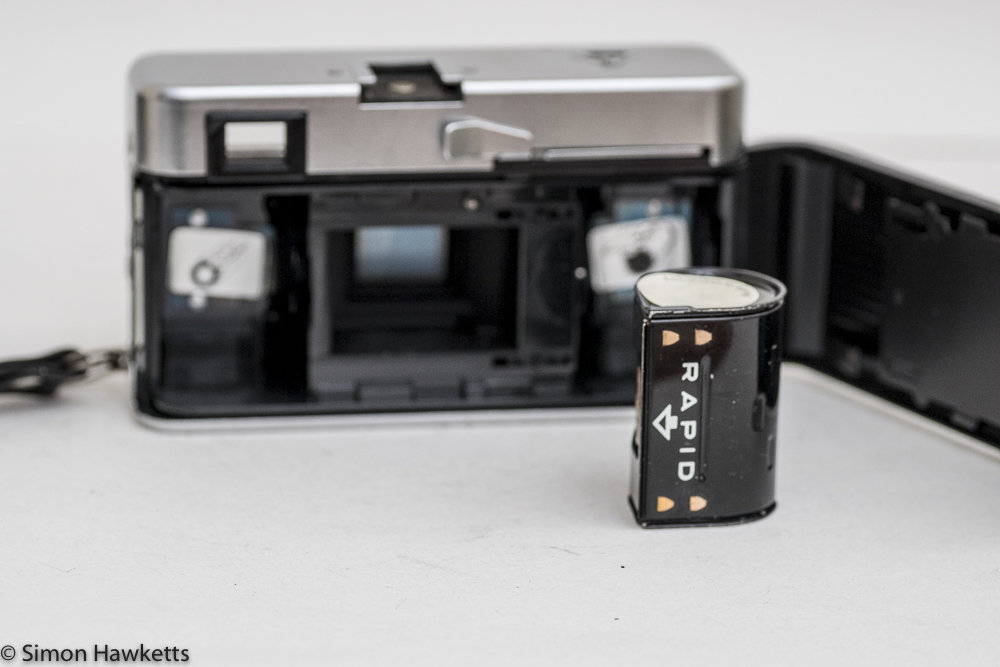
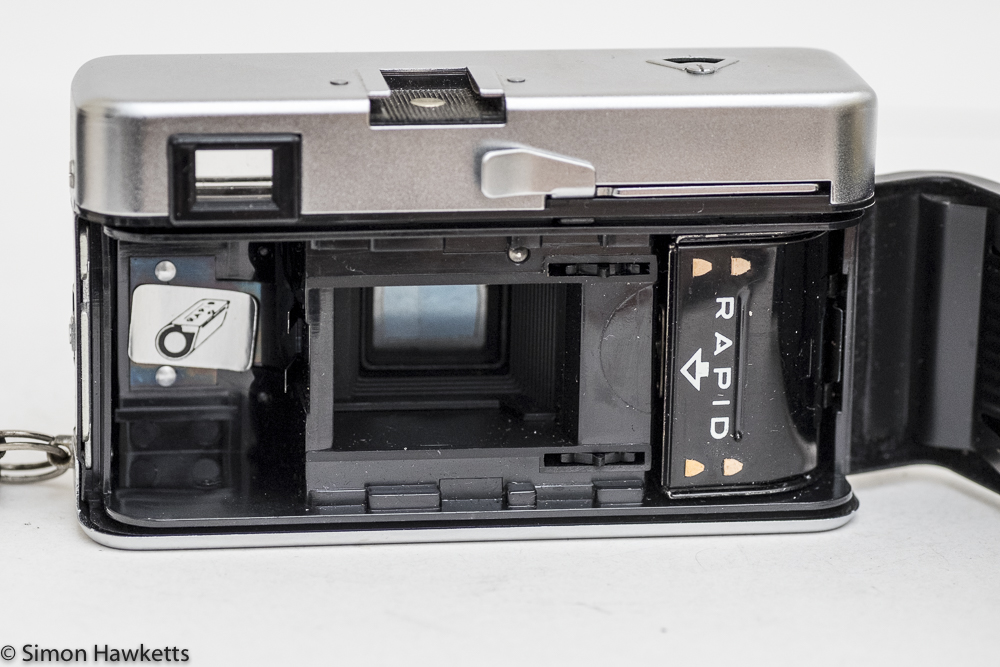
The Agfa Rapid system
As I said above, the Agfa Rapid system was designed by Agfa to be a simple mechanism for loading cameras with film.
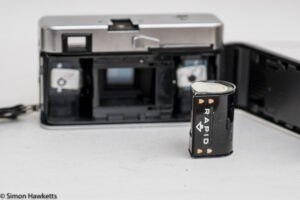
The film, which is standard 35 mm, is supplied in a small metal canister with a couple of inches of the film protruding. A similar canister is fitted into the take-up position in the camera and during use the film is moved from one canister to the other, simply being transported via the sprocket holes. The idea was that you simply dropped the full film in one side and when you had finished it you took it out of the other side.
In fact, the Rapid system had its origins in an earlier attempt at simple loading which Agfa tried with the Karat series of cameras, which is why I wanted to buy some Rapid film containers. The two systems are physically compatible, the only difference being that the Rapid films had a T shaped bar which transmits the film speed to cameras which could read it.
Unfortunately for Agfa, just after they introduced this system, Kodak came up with the Instamatic and that system became incredibly popular. So much so that, in the end, Agfa themselves started producing Instamatic cameras.
The three cameras
The three cameras are all pretty forgettable in terms of their build quality and spec. The two ISO rapid cameras are fixed focus units with a switch on the lens barrel marked sunny and shade. The only real difference between them seems to be that the Rapid I has a flash gun socket, and the Rapid C has a socket for flash cubes.
The Ilford Sportina Rapid is a slightly more advance unit with Sunny, Shade and Flash aperture settings, and a zone focus adjustment. It is also constructed in a slightly more solid fashion.
The build quality of all three is pretty low grade, being mostly made of thin sheet tin and hard plastic. I would guess they were very cheap to make, but they probably sold at a very low cost as well, so they suited a particular market.
In all, these are three cameras which I wouldn’t have bought normally for my collection, but they were the easiest way to get some rapid cartridges, so I thought I would at least give them a page between them.
Discover more from Everything Vintage
Subscribe to get the latest posts sent to your email.

